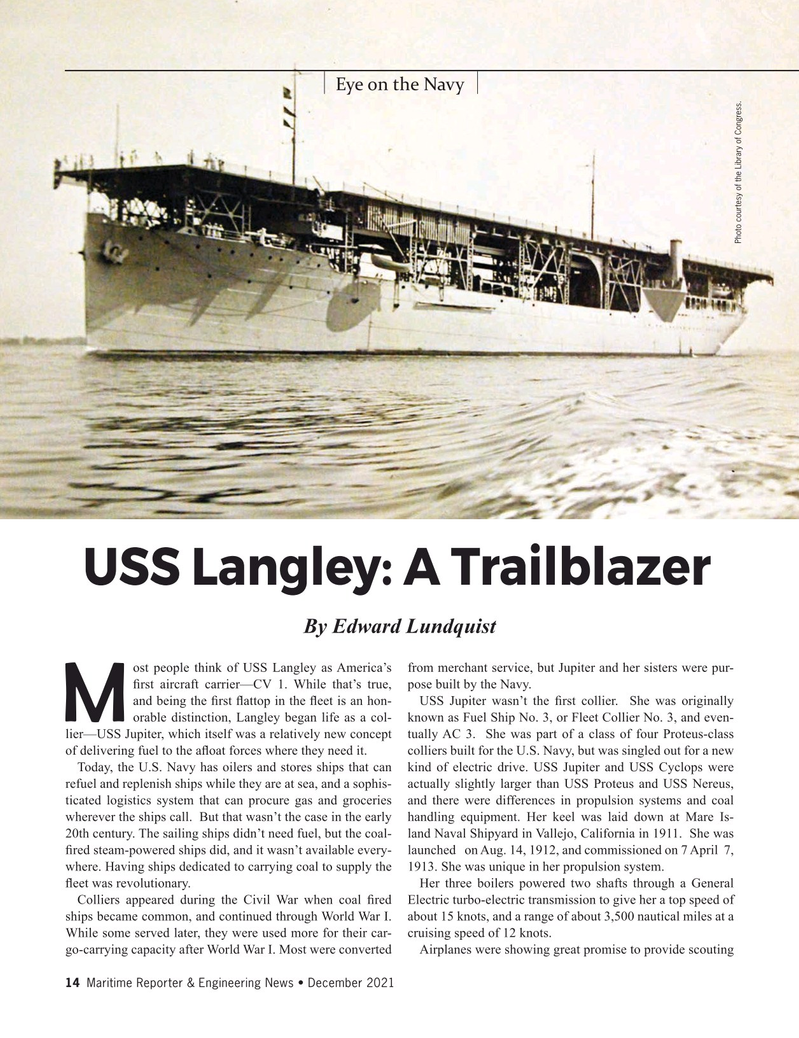
Page 14: of Maritime Reporter Magazine (December 2021)
Great Ships of 2021 Edition
Read this page in Pdf, Flash or Html5 edition of December 2021 Maritime Reporter Magazine
Eye on the Navy
Photo courtesy of the Library of Congress.
USS Langley: A Trailblazer
By Edward Lundquist ost people think of USS Langley as America’s from merchant service, but Jupiter and her sisters were pur- ? rst aircraft carrier—CV 1. While that’s true, pose built by the Navy. and being the ? rst ? attop in the ? eet is an hon- USS Jupiter wasn’t the ? rst collier. She was originally
M orable distinction, Langley began life as a col- known as Fuel Ship No. 3, or Fleet Collier No. 3, and even- lier—USS Jupiter, which itself was a relatively new concept tually AC 3. She was part of a class of four Proteus-class of delivering fuel to the a? oat forces where they need it. colliers built for the U.S. Navy, but was singled out for a new
Today, the U.S. Navy has oilers and stores ships that can kind of electric drive. USS Jupiter and USS Cyclops were refuel and replenish ships while they are at sea, and a sophis- actually slightly larger than USS Proteus and USS Nereus, ticated logistics system that can procure gas and groceries and there were differences in propulsion systems and coal wherever the ships call. But that wasn’t the case in the early handling equipment. Her keel was laid down at Mare Is- 20th century. The sailing ships didn’t need fuel, but the coal- land Naval Shipyard in Vallejo, California in 1911. She was ? red steam-powered ships did, and it wasn’t available every- launched on Aug. 14, 1912, and commissioned on 7 April 7, where. Having ships dedicated to carrying coal to supply the 1913. She was unique in her propulsion system. ? eet was revolutionary. Her three boilers powered two shafts through a General
Colliers appeared during the Civil War when coal ? red Electric turbo-electric transmission to give her a top speed of ships became common, and continued through World War I. about 15 knots, and a range of about 3,500 nautical miles at a
While some served later, they were used more for their car- cruising speed of 12 knots.
go-carrying capacity after World War I. Most were converted Airplanes were showing great promise to provide scouting 14 Maritime Reporter & Engineering News • December 2021
MR #12 (1-17).indd 14 12/2/2021 12:58:12 PM

 13
13

 15
15
